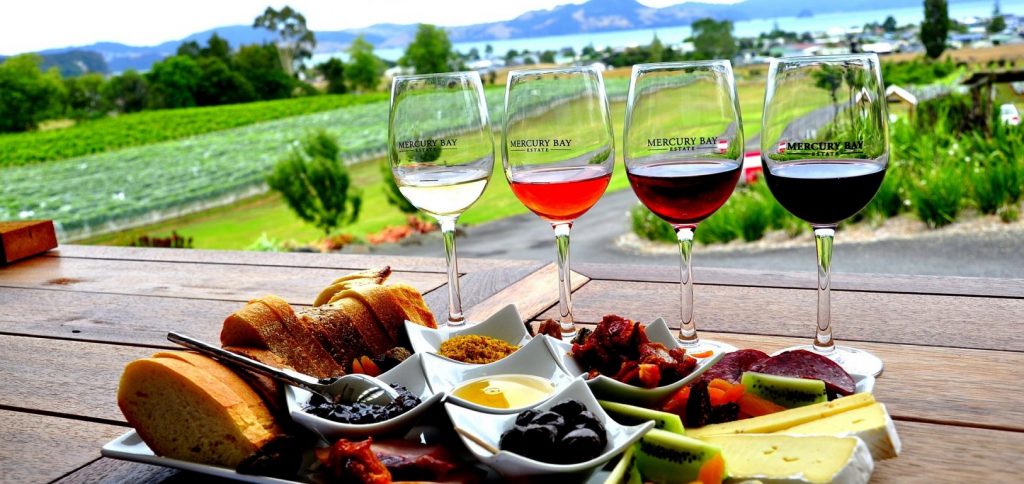Wine: In vino veritas – but some misconceptions, too!

Even James Bond knew that errors could be deadly when it comes to wine: A true Brit would never have ordered red wine with fish! That’s how enemy agent Grant (“From Russia with Love”) gave himself away – making that the last meal of his life. A good knowledge of wine can be helpful even outside the movies.
When it comes to wine, you never stop learning. And even experienced experts can make mistakes. Both novices and connoisseurs should keep these two truths in mind. Wine is the drink of the gods – at least those believing in their own divinity – and should be treated with humility. But most people searching for orientation in the broad field of wine are prone to simply go along with what they believe are the facts and rules of wine-drinking. Should these be outdated or simply wrong, good advice is expensive and a wine seminar is not the worst idea.
The right wine for the meal should be selected with care
Red wine with meat, white wine with fish – that’s the general rule of thumb, but it needs a review from today’s perspective. Fruity, slightly cooled red wines can go very well with fish – it all depends on how the fish is prepared. Likewise, certain white wines such as Barrique can pair well with some meats. Another stubborn belief is that late vintage – “Spätlese” – wines are always sweet. Not at all! Pure yeast cultures can now tolerate more sugar, meaning that Spätlese and even Auslese wines are often drier than they used to be. Only higher Prädikat wines such as Beerenauslese, Trockenbeerenauslese and ice wines are generally very sweet – and as classic dessert wines, they should be, because the sweetness in the food offsets the wine’s sweetness, which is why dry wines don’t taste as good with cake. The exception is the pairing of a mature, dry red wine with chocolate – preferably one with a higher cocoa content. That works!
Chemistry lesson on sugar
With regard to sweetness, there is a long-held suspicion that it’s boosted by the addition of sugar by the winemaker. Wrong: Most wines gain their sweetness by having their fermentation stopped on time (by cooling). As a result, part of the sugar formed by the grapes, in this case known as residual sugar, remains unfermented. So sweet wines aren’t “worse” than dry, as some people think. The practice of enhancing grape must by adding sugar before fermentation to increase alcohol (allowed only with quality wines, not with specially selected Prädikat wines) has nothing to do with it. In this process, known as chaptalization, the added sugar is fermented – and the result is dry wine! In this way, a simple quality wine can contain more alcohol than an expensive Spätlese. Alcohol content is not a quality criterion.
Not everything that’s dry is dry
The acidity in wine plays a major role in how strongly we perceive any sweetness. It should not be possible to taste sweetness in dry wines. But due to the carbonation, the taste designation “dry” allows a maximum residual sugar content in sparkling wine that would be considered in the sweet range for a still wine. So consumers wanting a sparkling wine with the sugar content of a “dry” wine should look for the Brut label. A sparkling wine labeled as “dry” is thus not as dry as you might think – a misconception with its roots in complicated wine designations. Did you know that the trendy label of “feinherb”, or delicately sweet, ultimately means nothing other than “half-dry”?
Does wine have to breathe?
Speaking of labels: Does the label or bottle have any effect on the quality? Of course not. And yet people persist in believing that only “cheap” wines have screw tops. That’s a misconception: Wine enthusiasts of a traditional mindset are reluctant to forgo the natural cork with its characteristic “plop”, but other types of caps now serve their purpose just as well. Even plastic plugs, which now largely consist of recyclable material, let wines “breathe” as much as necessary. Keyword: Wine needs to “breathe”. It’s correct that small amounts of oxygen are needed for the wine’s maturing process and taste. Wine glasses are bulbous to allow greater contact with air. But too much can lead to undesired oxidation – as anyone knows who has left an open bottle of wine in the refrigerator for too long. And what about the idea that wine gets better with age? That’s not entirely correct either. Not every wine is made for lengthy storage periods, and every wine has its peak of maturity, after which the taste begins to deteriorate. This is why it is better to consume some wines while they are still young.
The professional transfer of knowledge is also an important pillar of SIMEI@drinktec. The extensive program of the SIMEI Knowledge & Innovation Area, with highly specialized seminars and workshops, offers visitors input from outstanding experts in industry and science and representatives from international institutions from all over the world. Those for whom this is “too dry” can sample a few fine wines at the SIMEI Sensory Bar.
